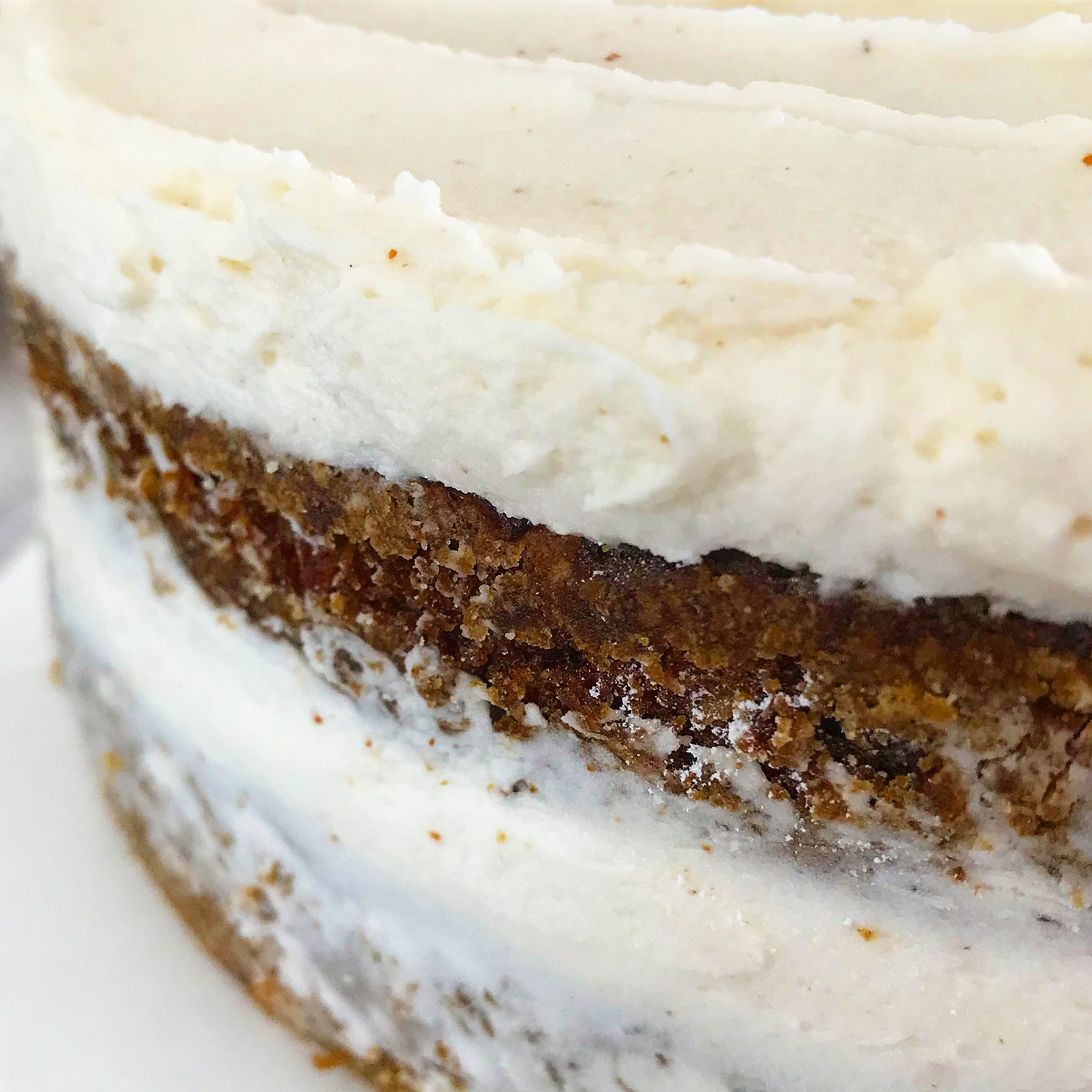Best Friends Cake

This is my very favorite kind of recipe.
My dear friend, Jennifer, who I met when I lived in Minnesota, shared it with me. She got it from her friend Shannon when they both lived in Austin, Texas. Shannon got it from someone who loved a carrot cake from a bakery in Connecticut and figured out the recipe.
Connecticut to Texas to Minnesota to New Jersey to you, wherever you’re reading this. I love a recipe that has legs.
Jennifer’s friend called it Best Friends Cake because it helps win you friends wherever you take it. I wholeheartedly agree. It is simply the best carrot cake I’ve ever had.
I made this cake for sale when I had my home-based baking business in Minnesota. It was always extremely delicious, moist and dense. It also always sank in the oven. Always. No matter what I did. Jennifer had the same experience. It wasn’t underbaked. It just collapsed while it was still in the oven, leaving a large divot in the middle. I typically filled the divot with extra frosting, but I wanted a better result.
When I was researching carrot cake recipes for this post, I realized that many of them rely on baking soda only for leavening. The original Best Friends Cake recipe had a hefty amount of both baking soda and baking powder. I suspected that the additional leavening was causing my cake to rise too quickly and high during baking, then collapse because it couldn’t support itself.
I made a quick phone call to a really wonderful baking resource, the King Arthur Flour Baker’s Hotline. Yes, this really exists, and, yes, I have called it many times. The helpful baker I spoke with said she also suspected this was the issue. So, I eliminated the baking powder, and the resulting cake was PERFECT. Still dense and moist and rich but no sinking. Remember this when you’re tempted to change a baking recipe: science matters. Baking is chemistry. Ask an expert before you mess with things.
Today, I’m sharing the cake recipe with you. Tomorrow, I’ll share the recipe for what puts this cake deliciously over the top: Browned Butter Frosting. I'll also share my favorite frosting technique for this cake, which my daughter says makes it look like an "antique" cake.
Let’s make some carrot cake and new friends, shall we?
This recipe yields two 9-inch round cake layers. I always grease, flour, and line my pans with parchment when baking cakes and particularly recommend it for this recipe; it’s a relatively sticky cake. I’ve also had success making a half batch of the batter as cupcakes; the yield for a half batch was 15 cupcakes, and the bake time was 20 minutes. If making cupcakes, skip the grease/flour/line step and just use cupcake liners. I can’t recommend using pre-shredded carrots as I haven’t tried them, and they might change the moisture content of the batter. And as we’ve learned, science matters! A food processor makes quick work of grating the carrots. On the allergy front, this cake is dairy free, although the Browned Butter frosting that accompanies it is not. If you have a favorite dairy-free frosting recipe, use that and enjoy dairy-free cake goodness.
Carrot Cake
Ingredients:
1 pound carrots, washed and tops trimmed (you can use whole, unpeeled carrots or pre-peeled baby carrots)
2 cups granulated sugar
1-1/2 cups vegetable oil
4 large eggs
2 cups all purpose flour, plus extra for dusting pans
2 teaspoons baking soda
1 teaspoon salt
1 tablespoon ground cinnamon
3/4 cup chopped pecans
3/4 cup shredded, sweetened coconut
Directions:
Adjust oven rack to middle position and preheat to 350 degrees. Spray two 9-inch round cake pans with cooking spray or grease with shortening. Thoroughly dust the pans with flour and shake out the excess. Line the bottom of each pan with a 9-inch round piece of parchment, lightly pressing to help the parchment adhere.
Using a food processor fitted with the shredding attachment or the medium holes of a box grater, shred the carrots. You should have 4 lightly packed cups of carrots. Place the carrots in a kitchen towel and squeeze to help blot away excess moisture. Alternatively, place the carrots in a fine mesh sieve and press firmly to release moisture. Set carrots aside.
Place the sugar and vegetable oil into the bowl of a mixer. Beat on medium-high speed until smooth, about 1 - 2 minutes. Reduce the speed to low and add the eggs one at a time, allowing them to be thoroughly mixed in between additions (about 15 - 30 seconds per egg). Add the carrots and mix on low until combined.
In a separate medium bowl, whisk together the flour, baking soda, salt, and cinnamon. Add to the batter and mix on low until just barely combined with some streaks of flour still showing. Add the pecans and coconut and mix on low until just combined with no streaks or pockets of flour, stopping to scrape the bowl at least once.
Divide the batter evenly between the prepared pans (I use a kitchen scale to help ensure the batter is evenly divided). Place pans in oven and bake, rotating once, until a toothpick inserted in the center of the cake layers comes out clean, about 40 minutes.
Remove pans from oven to a cooling rack and allow to cool for 10 - 15 minutes. Gently run a butter knife around the edges of the pan to loosen. Flip cake out of pan onto a cooling rack and peel off parchment. Allow to cool completely, at least 2 hours, before frosting. You can also make the cake layers a day in advance, wrap them each separately and thoroughly with plastic wrap, and store at room temperature until you're ready to frost. Yield: two 9-inch cake layers, enough to serve 12 once frosted.






